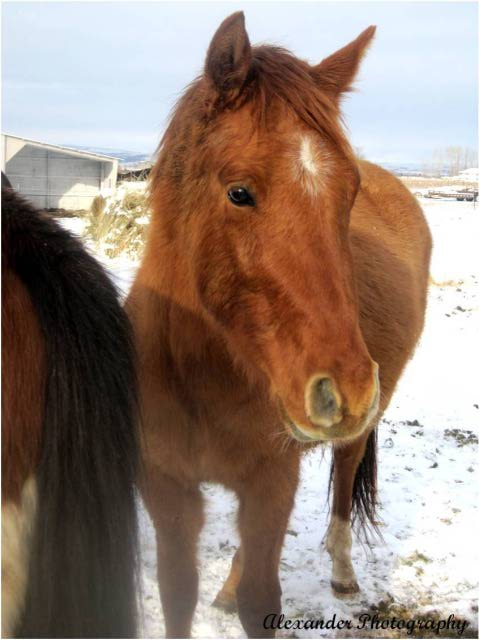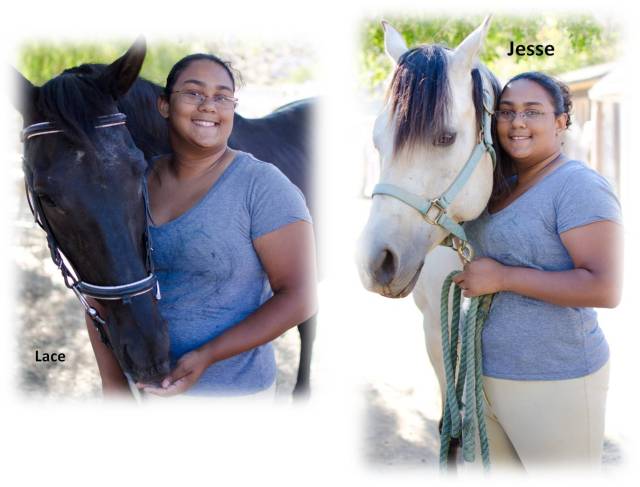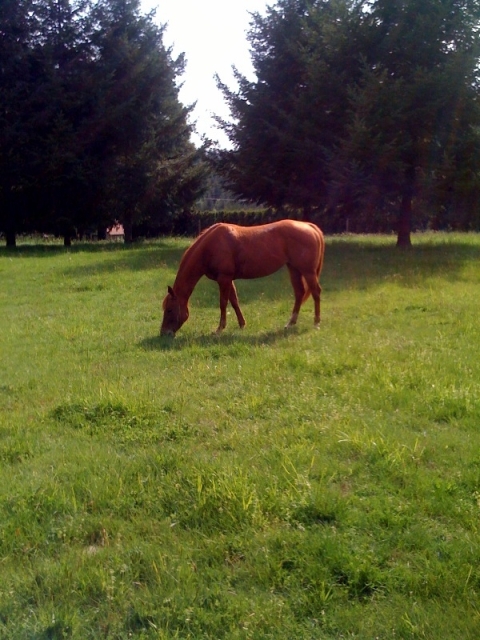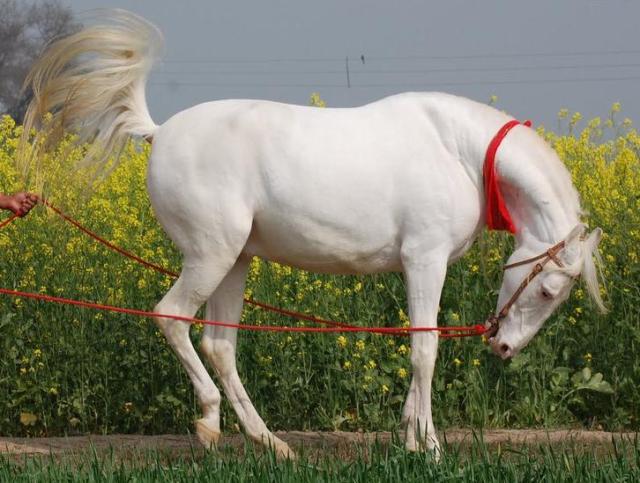QuestionI recently bought a 15 year old quarter horse gelding. He spent the past several years at a local state park as a babysitter trail horse. When I got him, I was told he took a broken bit and that was it. On the ground, he is golden. Under saddle, I discovered that he neck reins with the lightest touch and he moves off your leg beautifully. His headstall has an o-ring snaffle, noseband, and light curb chain. When I try to get him to stop, I sit deep, feet out in front, and verbally ask for it, he doesn't stop. I pull on him lightly, he doesn't stop and begins to toss his head. I pull on him harder, and he begins to charge. Yesterday, he took me through the church lot and around the preacher's house at a run, the whole time I'm pulling on him, trying to get him to stop.
My dad, who is a far more aggressive rider than me, gets on him. We've tied his head down and lunged him for a half hour with plenty of changes in direction. I had noticed before after struggling with him to stop, he'll shut down. He won't move forward, even with squeezing, clucking, spanking, spurring, and pulling his head around. He just stands there defiantly. When my dad got on him, he immediately charged forward, when asked to stop, he threw his head. When he couldn't get it very high, he come unglued. He tried to scrub my dad off on the fence, out buildings, side of the garage, pretty much every structure. He attempted to bite my dad in the leg, but couldn't reach because of the tie down. Then he tried to roll.
What can I do to help my gelding?
AnswerHi Audrey,
This horse has no respect for you at all. He has learned that he can do what he wants, when he wants...and there's nothing you can do about it.
First, let's talk about your equipment. I agree with the O-ring snaffle or a simple snaffle with bars. Make sure the headstall has a browband on it. The O-ring works off direct pressure to side of the mouth and the browband works with pressure to the poll. I would ditch the noseband. This is just adding more anxiety to the horse. I would also not use a "curbchain". The curb piece in conjunction with a simple snaffle serves only one purpose. It is simply there to keep the rings from sliding through the mouth. It applies no pressure at all. If you use a simple snaffle with bars, you do not need a curb piece at all. The bars work to keep the bit from sliding into the mouth. The other item I would dump, is the tie down. I agree with tie downs for roping and barrel racing, as it serves a purpose there. But in your case, the tie down is creating more panic in your horse when he finds out he cannot move his head freely. I think you discovered this when he became "unglued" with your Dad.
Now we can discuss "how you use" this equipment.
You wrote that when you wish him to stop, you "sit deep, feet out in front, and verbally ask for it....pull on him lightly....pull harder".
Ok....sitting deep in your pockets is good...feet out front is good....asking for a stop verbally is ok. (I personally teach a horse to stop with just my body and not with words). But now things go bad when you start pulling. The snaffle bit is designed for two handed riding. It can be used one handed after the horse has learned...but two handed for schooling. When schooling, you should NEVER pull on both reins at the same time. If you notice what happens when you pull on both reins...you pull both reins....the horse's head and nose shoots into the air...and then he can charge and you cannot stop him. You are trying to pull against him when he is in a straight line with you. This is a no win situation. He will win every time. You have to put him a little off-balance to get him to stop or turn. When his head is turned to the side, he is off-balance.
So, here is my suggestion.
The next time you mount him, just stop and take a breath. Don't go anywhere. Flex his head from side to side a few times. The cue him to walk off with a slack rein. One rein in each hand...hands down low and in front. Let him walk about five or six steps. At this point I want you to "think" stop. Just quit riding. Exhale and let your pockets sit down in the saddle, move your feet a little forward. DO NOT PULL ON THE REINS!!!!
If he doesn't stop within two to three steps, pull his head to one side..keeping the off side rein slack. Only use one rein at a time. Keep your feet off him. He will probably move in a circle. Let him move in that circle until his feet quit moving. When his feet stop....flex him from side to side a couple of times. Then pet him letting him know he did right. This might take quite a few times to teach him what you want. But be patient. Don't get frustrated and don't get in a hurry. After a while, you should see your horse start to listen to your seat. When you exhale and sit down...he should come to a stop or at least slow down. Don't worry about going fast. Work at a nice slow walk for now. Remember...ONE REIN AT A TIME.....NEVER TWO REINS. Two reins can come later. I believe this should also solve the balking problems and the lieing down problem. He should learn that he is not constricted (so no reason to fight) and he should relax.
As a note....this should all be done in a controlled area. Such as a round pen or an arena for safety concerns. If you feel you do not have the experience or confidence to do this...that is ok. Fear is a good thing. It keeps us alive. Fear tells us, "Hey!! If you try to do this, you might get killed!!!" So, there's nothing wrong with a little fear. Just find an experienced rider to do it for you until you build your confidence. If you do attempt this, please stay safe. Even though I get paid to mount untrained horses and problem horses...my safety is paramount. I can't continue to be paid if I'm in an ICU or worse.
I hope this has helped you. Remember, don not rush this. Take your time and be patient.

 Colt Refuses to be Caught
Question
Spartan
Hi,
I have a 2 year old colt n
Colt Refuses to be Caught
Question
Spartan
Hi,
I have a 2 year old colt n
 K K snaffle
Question
K K snaffle
hello, what are K K snaffles? is i
K K snaffle
Question
K K snaffle
hello, what are K K snaffles? is i
 Thank you!!!
Question
Me & My Girls
Hi Rick,
I sent you
Thank you!!!
Question
Me & My Girls
Hi Rick,
I sent you
 Herd bound
Question
Bambi
Hi Christine,
My husband and I have been
Herd bound
Question
Bambi
Hi Christine,
My husband and I have been
 adjusting stirrups
Question
adjusting stirrups
hello, my height is 5feet 6
adjusting stirrups
Question
adjusting stirrups
hello, my height is 5feet 6